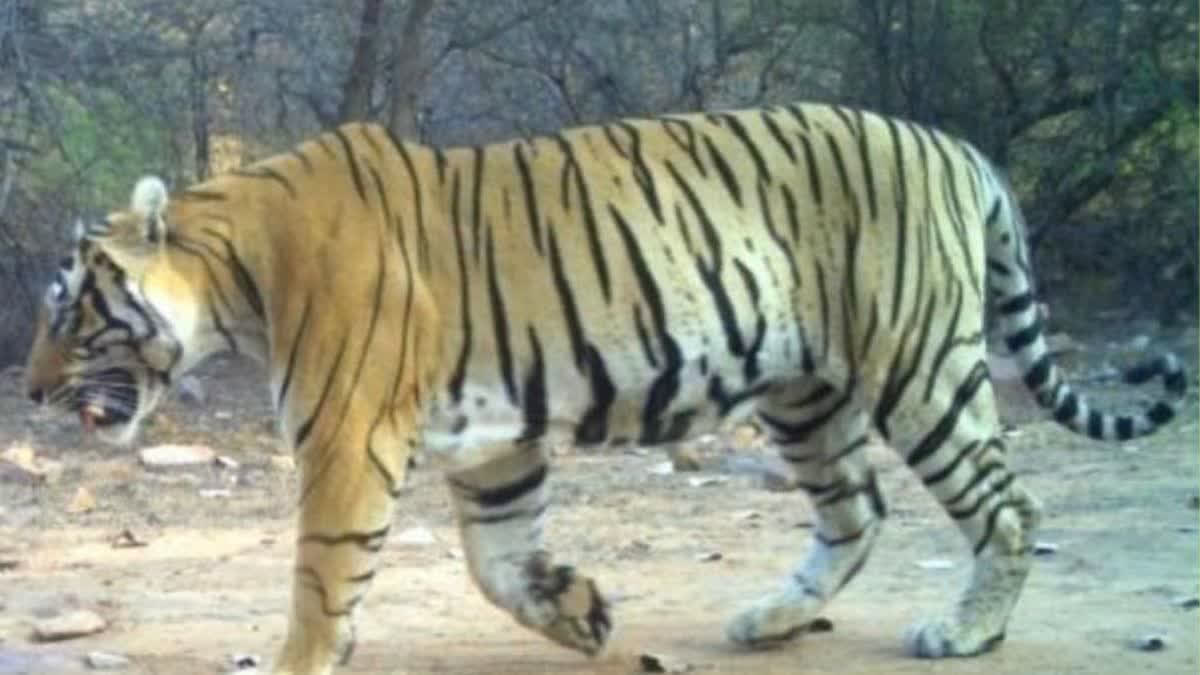Bharatpur: Once sprawling and ample, the Ranthambore Tiger Reserve in Sawai Madhopur, Rajasthan, is now home to a bustling tiger population that has outgrown its boundaries, housing 35% more tigers than its capacity. A total of 77 tigers are now occupying a sanctuary designed to accommodate approximately 56. This surge in numbers, attributed to both natural births and successful conservation efforts, has led to plans for the relocation of some tigers to nearby reserves.
Chief Conservator of Forests (CCF) Anup K. R. said, “The reserve has a capacity for around 56 tigers within its 392-square-kilometer area. Currently, we have about 21 more tigers than the ideal population, and this situation requires periodic transfers to other sanctuaries.” CCF Anup added that preparations are underway to shift two tigers each to the Mukundra and Ramgarh Visdhari Tiger Reserves, with relocation pending NTCA approval.
Population Growth and Space Constraints
In 2017, the reserve was home to 57 tigers, but this number has since risen to 77. In the last year alone, a total of 13 cubs were born to tigresses Sultana, Riddhi, Siddhi, and Arrowhead, adding to the already dense population.
Past records indicate that tiger overcrowding has led to territorial conflicts, resulting in stress among the animals and a few isolated deaths. The average lifespan of tigers is around 12 to 14 years, with natural deaths occurring among older animals. However, unnatural fatalities, including those linked to poaching, remain rare due to effective conservation measures.
CCF Anup added that with new births expected each year, the reserve’s limited space necessitates such relocations to ensure a balanced ecosystem. In addition, radio collars and monitoring systems will be used to track relocated tigers, enabling forest officials to observe their adaptation and health in new habitats.
In a related news, two cubs born to tigress ST-14 in the Sariska Tiger Reserve were recently recognized and named ST-2401 and ST-2402, marking another achievement in Rajasthan’s wildlife conservation efforts.
Key Points:
• Current Population: 77 tigers, exceeding capacity by 35%.
• Optimal Capacity: Approximately 56 tigers for the 392-square-kilometer reserve.
• Recent Births: 13 cubs born in the past year from tigresses Sultana, Riddhi, Siddhi, and Arrowhead.
• Relocation Plans: Tigers to be shifted to Mukundra and Ramgarh Visdhari Tiger Reserves.
• Population Growth: Tiger numbers have grown by 35% over the last seven years, from 57 in 2017 to 77 in 2024.
• Conservation Efforts: Rajasthan’s reserves have a history of successful relocations to balance tiger populations across the state.
Read More



